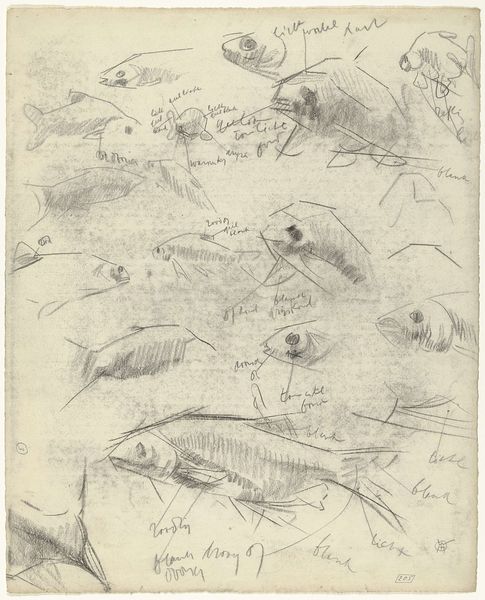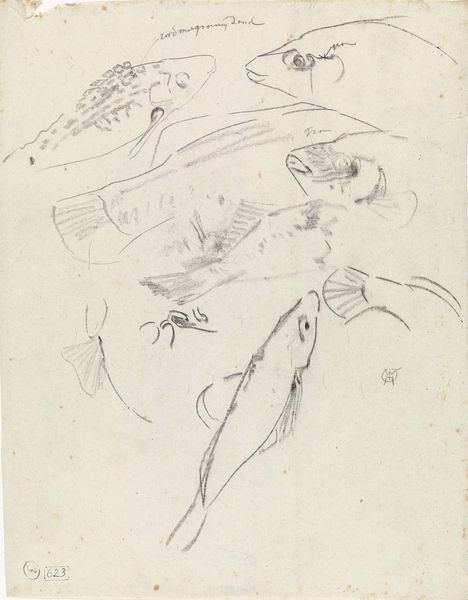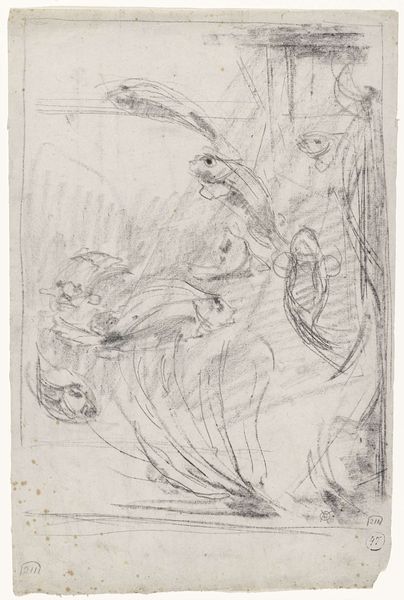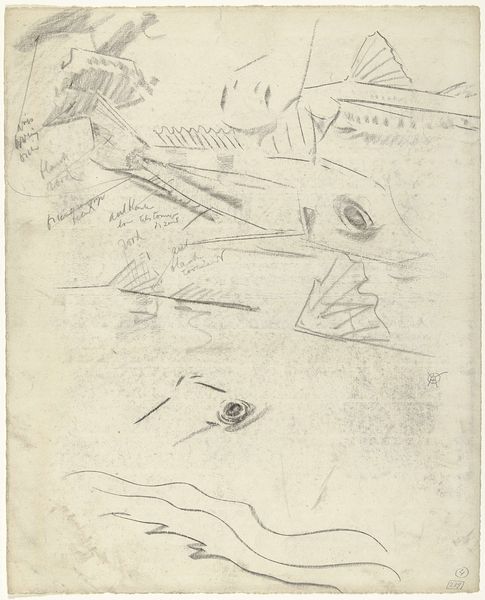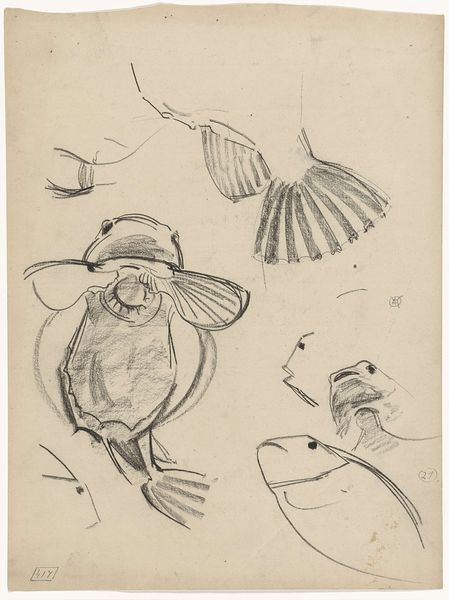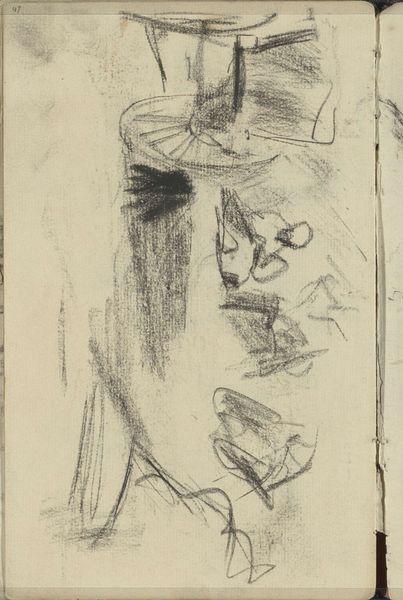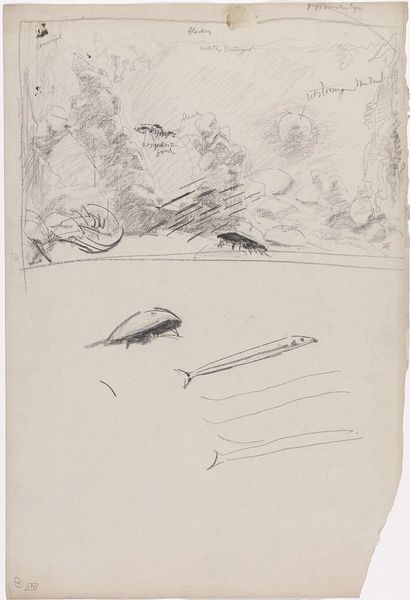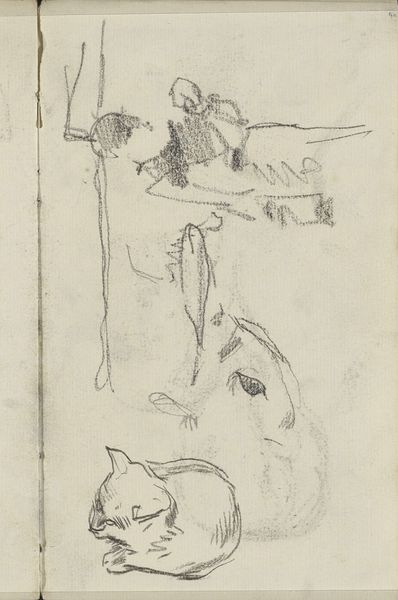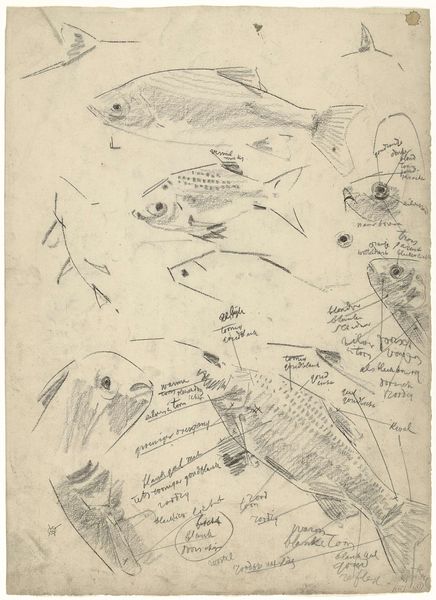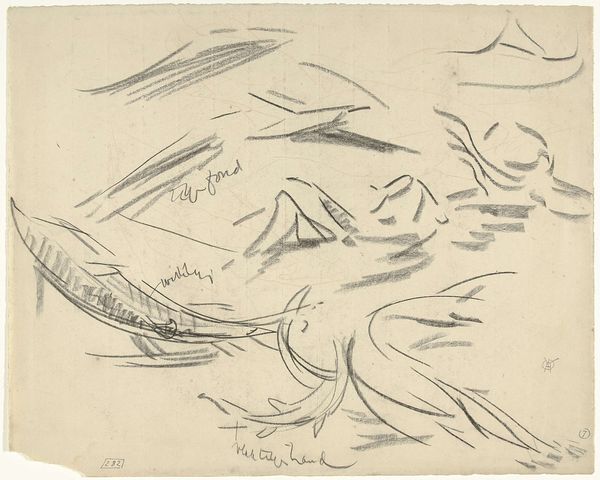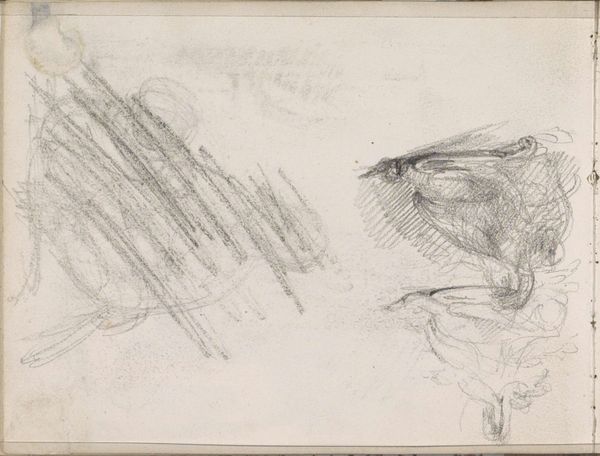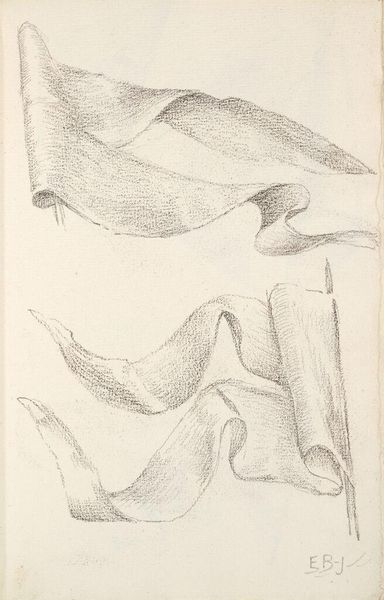
drawing, pencil, graphite
#
drawing
#
light pencil work
#
pen sketch
#
pencil sketch
#
figuration
#
personal sketchbook
#
ink drawing experimentation
#
pen-ink sketch
#
pencil
#
graphite
#
sketchbook drawing
#
pencil work
#
academic-art
#
sketchbook art
#
realism
#
initial sketch
Dimensions: height 533 mm, width 426 mm
Copyright: Rijks Museum: Open Domain
Curator: Let’s turn our attention to a work titled "Schetsblad met ponen" by Gerrit Willem Dijsselhof, created sometime between 1876 and 1924. It’s a sketch sheet featuring studies of gurnard fish, rendered in pencil and graphite. Editor: Ah, a sketchbook page! I get a feeling of being in the artist's mind, watching him observe these quirky sea creatures. There’s a lovely sense of exploration, isn’t there? Like catching fleeting impressions of scales and fins. Curator: Indeed. Notice the artist’s dedication to capturing the form through line. The varied pressure and density of the graphite create depth, emphasizing the three-dimensionality of the fish, while the annotations suggest a scientific, almost taxonomic, interest. Editor: Yes, but there’s also something almost… playful? It’s not just clinical observation, right? See how he uses quick, gestural lines, particularly around the fins. It almost feels like he's giving them a little dance, a spark of life. Curator: The composition benefits from its sketchbook nature. The repetition of forms—the multiple studies of the gurnard—serves to reinforce the central subject and demonstrate the artist’s engagement with the subject. Editor: It strikes me as more than just studies, though. It’s like he’s building a relationship, getting to know the fish. Look at the details around the eye in that larger sketch at the top; so alive. Almost as though they might speak, don't you think? Curator: An intriguing proposition. Though my understanding leads me to view this as more a formal exercise in representation rather than any deep emotive narrative with its aquatic subject. The artist appears focused primarily on their anatomical depiction and less concerned with an allegorical tale. Editor: I see your point, of course. But maybe the story is simply the joy of looking closely. Capturing something wild and beautiful in pencil – there is inherent beauty, in and of itself, isn’t there? It's the quiet joy of observation distilled onto the page. Curator: A perspective of charming simplicity. It offers an accessible entry point to understanding Dijsselhof’s draftsmanship. Thank you for sharing. Editor: Anytime. Art’s more fun when it sparks a little something inside.
Comments
No comments
Be the first to comment and join the conversation on the ultimate creative platform.
